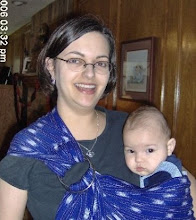 Hathor
Hathor's been doing some neat comics lately on
Oxytocin - the "
Love Hormone". She just came back from the
Trust Birth Conference which I really wish I could have gone to. She heard
Michel Odent speak, and he really rocked her world, as he did mine when I heard him speak a couple years ago at a local conference. Hathor came across
this article, over a year old and just a rat study, but still important:
The massive surge in the maternal hormone oxytocin that occurs during delivery might help protect newborns against brain damage, a new study in rats suggests.
Researchers say the findings should encourage scientists to investigate whether elective caesarean sections, which lack this oxytocin surge, disrupt normal brain development.
Also, I found
Hug the Monkey, a whole blog devoted to the subject of Oxytocin; and an article entitled
5 Ways Pitocin is Different than Oxytocin which, in honor of
list month, I will include here:
- Pitocin is released differently. Oxytocin is released into your body in a pulsing action. It comes intermittently to allow your body a break. Pitocin is given in an IV in a continuous manner. This can cause contractions to be longer and stronger than your baby or placenta can handle, depriving your baby of oxygen.
- Pitocin prevents your body from offering endorphins. When you are in labor naturally, your body responds to the contractions and oxytocin with the release of endorphins, a morphine like substance that helps prevent and counteract pain. When you receive Pitocin, your body does not know to release the endorphins, despite the fact that you are in pain.
- Pitocin isn't as effective at dilating the cervix. When the baby releases oxytocin it works really well on the uterine muscle, causing the cervix to dilate. Pitocin works much more slowly and with less effect, meaning it takes more Pitocin to work.
- Pitocin lacks a peak at birth. In natural labor, the body provides a spike in oxytocin at the birth, stimulating the fetal ejection reflex, allowing for a faster and easier birth. Pitocin is regulated by a pump and not able to offer this boost at the end.
- Pitocin can interfere with bonding. When the body releases oxytocin, also known as the love hormone, it promotes bonding with the baby after birth. Pitocin interferes with the internal release of oxytocin, which can disturb the bonding process.
I knew, like, three of those already. And for some really hair-raising stories, try Knitted in the Womb's
Rant on Pitocin (with comments).






